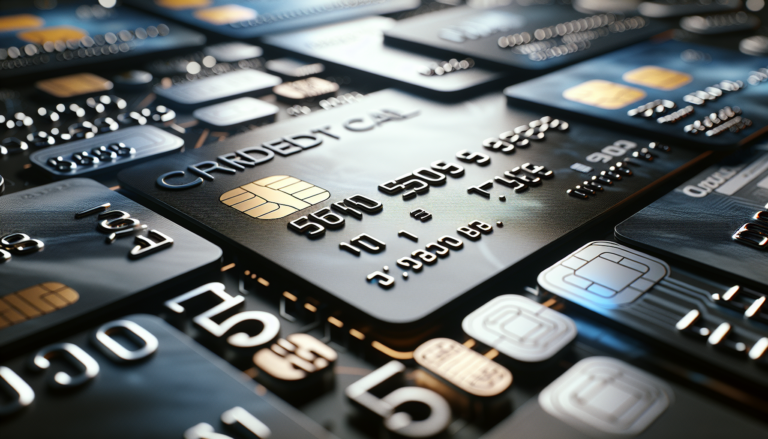#ST#
Where is the Security Code on American Express? Find It Easily
When making online purchases or transactions, you may be asked to provide the security code from your credit card. This is a crucial step to verify your identity and protect against fraud. For American Express cardholders, locating the security code is easy once you know where to look. In this article, we’ll explain everything you need to know about finding and using the security code on your American Express card.
Understanding the Security Code on American Express Cards
What is a CVV?
CVV stands for Card Verification Value. It is a security feature used to verify card ownership during online transactions where the physical card is not present. The CVV helps to confirm that the person making the purchase is in possession of the actual card, adding an extra layer of protection against fraud.
On most credit cards, such as Visa and Mastercard, the CVV is a 3-digit number printed on the back of the card. However, American Express does things a bit differently. On AMEX cards, the security code is a 4-digit number located on the front of the card.
Location of the Security Code on American Express Cards
To find the security code on your American Express card, look for a 4-digit number printed on the front of the card, just above and to the right of your main credit card number. This 4-digit code is your Card Identification Number (CID), which is used for verification purposes during online or phone transactions.
The CID provides an additional level of security to protect you against unauthorized use of your card. Remember, the AMEX security code is always 4 digits and is located on the front, unlike the 3-digit CVV found on the back of other credit cards.
Difference Between CVV and CID on American Express Cards
While the terms CVV and CID are often used interchangeably, there is a slight difference when it comes to American Express. As mentioned, the security code on AMEX cards is called the CID and consists of 4 digits. However, American Express cards also have a traditional 3-digit CVV printed on the back.
The 3-digit CVV on the back of your AMEX card serves a different purpose than the CID. It is used in certain situations, such as when an automated fuel dispenser requires it. To avoid confusion, always remember that for most online transactions, you will need to provide the 4-digit CID from the front of your American Express card.
Importance of the Security Code for Online Transactions
How the CVV Enhances Security
The security code is a vital tool in preventing fraudulent transactions and protecting your financial information. When you provide your CVV or CID during an online purchase, the merchant can verify that you have the physical card in your possession. This helps to reduce the risk of unauthorized purchases made with stolen credit card numbers.
In addition, merchants are prohibited from storing CVV codes in their databases. This means that even if a hacker manages to access a merchant’s customer information, they would not be able to retrieve the security codes. This additional layer of protection makes it much harder for fraudsters to make unauthorized purchases with your American Express card.
PCI DSS Compliance and CVV
The Payment Card Industry Data Security Standard (PCI DSS) is a set of guidelines that all businesses must follow when accepting, processing, or storing credit card information. One of the key requirements of PCI DSS is the proper handling of CVV codes.
Under PCI DSS, merchants are not allowed to store CVV codes after a transaction is completed. This helps to minimize the risk of CVV data being stolen in the event of a data breach. By adhering to PCI DSS standards, American Express and other credit card companies can better protect their customers’ sensitive information.
Best Practices for Using Your American Express Security Code
You should only provide your American Express security code when making a purchase from a trusted merchant. Before entering your CID, ensure that the website is secure and legitimate. Look for the padlock icon in the browser’s address bar and check that the URL starts with “https” instead of just “http.”
Be cautious of unsolicited emails or phone calls requesting your security code. American Express will never ask for your CID via email or phone. If you receive a suspicious request, contact American Express directly using the phone number on the back of your card.
Common Mistakes to Avoid
One common mistake American Express users make is entering the 3-digit CVV from the back of the card instead of the 4-digit CID from the front. This can lead to transaction failures and frustration. To avoid this issue, always remember that for most online purchases, you need to provide the 4-digit code located on the front of your AMEX card.
Another mistake is sharing your CID with unauthorized parties. Never give your security code to someone claiming to be from American Express or any other financial institution. Keep your CID confidential and only share it with trusted merchants when making a purchase.
Conclusion
Understanding where to find the security code on your American Express card is crucial for making secure online transactions. Remember, the 4-digit CID is located on the front of your AMEX card, just above and to the right of your main credit card number.
By using your security code correctly and keeping it confidential, you can help protect yourself against fraud and unauthorized purchases. Always be cautious when sharing your CID and only provide it to trusted merchants. If you have any concerns about the security of your American Express card, don’t hesitate to contact their customer support for assistance.
#ST#
See also:
- Who Takes American Express? Find Out Where It’s Accepted
- How to Activate Mastercard Gift Card – Step-by-Step Guide
- What is the Best American Express Card? Discover Top Options for 2024
- How to Get an American Express Card: A Step-by-Step Guide
- What Number Does Mastercard Start With? Understanding Mastercard Numbers






